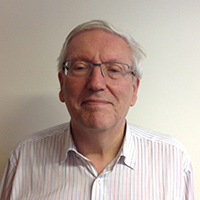
Professor John Wilson
(University of Oxford)
Professor Wilson, born and brought up in Lincolnshire, studied at the University of Cambridge, receiving the MSc degree in 1970, the PhD degree in 1971 and the ScD degree in 1989. He has held academic positions in Cambridge from 1969 to 1994, at the University of Birmingham from 1994 to 2003, and at the University of Oxford from 2013; he has also held visiting professorships in many other universities on three continents. He has been Editor-in-Chief of the Journal of Group Theory since its foundation in 1998, was Editor-in-Chief of Math. Proceedings of the Cambridge Philosophical Society from 1987 to 1992 and has served on the editorial boards of a number of other major international journals.
Professor Wilson has published over 100 research articles in the area of group theory and one of the standard monographs on profinite groups. He has developed an extensive theory for branch groups, proved important results in the model theory of groups and solved a number of long-standing problems.
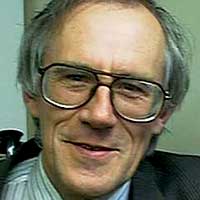
Professor Charles Leedham-Green
(Queen Mary, University of London)
Professor Charles Leedham-Green graduated from Oxford University in 1963, where he also received his D.Phil. in Mathematics in 1966. He is a Professor of Pure Mathematics, Queen Mary, University of London, since 1997. His research is in the area of group theory, where he published over 50 research articles and co-authored (with S. McKay) the definitive monograph The Structure of Groups of Prime Power Order (Oxford University Press, 2002).
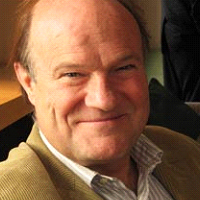
Professor Michael Vaughan-Lee
(Oxford University)
Michael was educated at Oxford University, where he received his B.A. (First Class Honours) in Mathematics in 1965, M.A. in Mathematics in 1968, and D.Phil. in Mathematics in 1968. He has held academic positions at Vanderbilt University, Nashville, Tennessee, University of Queensland, and since 1971 at Oxford University, where he became a Professor of Mathematics in 1996. His research for many years has been in developing Lie algebra methods in group theory, and in applying these methods to solving problems in group theory. He is also heavily involved in developing computer programmes for studying groups and Lie algebras. Professor Vaughan-Lee has published over 60 research articles and authored the definitive monograph The Restricted Burnside Problem (now in its second edition) published by Oxford University Press.
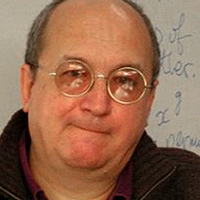
Professor Alexandre Borovik
(University of Manchester)
Professor Alexandre Borovik studied at the Novosibirsk University (Russia), where he received his MSc in 1978 and PhD in 1982. He has held academic positions at the Academy of Sciences, Russia, the University of California, Irvine, and at Rutgers University, USA. Since 1992 he has worked at UMIST and the University of Manchester. His research interests are focused on group theory, model theory and combinatorics. He has published over 80 research papers and 3 research monographs in mathematics and a post-graduate level textbook. He is a member of the Council of the London Mathematical Society (and served on Programme, Research Meetings, and Education Committees of the London Mathematical Society) and of the Council of the British Logic Colloquium. Professor Borovik is also well known for his interest in the philosophy of mathematics and mathematical education, on which he published the book Mathematics under the Microscope (AMS, 2010).
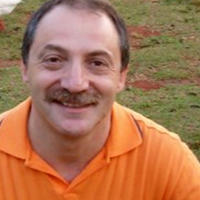
Professor Pavel Shumyatsky
(University of Brasilia, Brazil)
Pavel Shumyatsky received his PhD in Mathematics in 1989 from Urals University (Yekaterinburg, Russia). He then held research positions in Urals University (1990-1991) and Technion, Israel (1992-1995). Since 1995 he has worked in the Department of Mathematics, University of Brasilia, Brazil (Full Professor since 2003). He has authored over a hundred research papers, mostly on group theory, and supervised about 10 doctoral students.
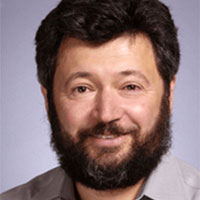
Professor Efim Zelmanov
(University of California, San Diego) Fields Medal 1994
Professor Efim Zelmanov studied at the Novosibirsk University (Russia), where he received his MSc in 1977 and PhD in Mathematics in 1980. He received DSc degree at Leningrad University in 1985. He held academic positions at Sobolev Institute of Mathematic in Novosibirsk (1980–1992), he was Professor of Mathematics in University of Wisconsin—Madison (1992–1996), in University of Chicago (1994–1995), Yale University (1995–2002), and since 2002 he is R. Atkinson Professor of Mathematics in University of California—San Diego. His research interests are in algebra (group theory and non-associative rings), where he has achieved outstanding results including the solution of the Restricted Burnside Problem. He was awarded College de France Medal in 1991 and Fields Medal in 1994. Professor Zelmanov is a member of the National Academy of Science of USA, foreign member of several national academies of science, and Honorary Dr of several universities all over the world. He is also a member of the editorial boards of international journals Algebra Colloquium, Algebra and Logic, Annals of Mathematics, Communications in Algebra, European Journal of Mathematics, International Journal of Algebra and Computation, Journal of the American Mathematical Society, Journal of Lie Theory, Journal of Algebra & Applications, Bulletin of Mathematical Sciences. He is a member of the Abel Prize Committee, and of the advisory boards of American Institute of Mathematics, Fields Institute, Pacific Mathematical Institute, Max Planck Institute, Beijing University Mathematical Institute and Institute for Basic Science of Korea.
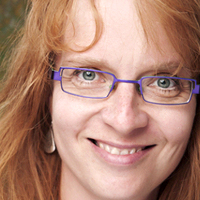
Professor Natasha M. Maurits
(University Medical Center Groningen, Netherlands)
Nathasha received both MEng (1994, cum laude) in Applied Mathematics and MSc (1994, cum laude) in Numerical Mathematics from the University of Groningen (Netherlands). In 1998 she received a PhD (cum laude) for her work in mathematical modelling in Chemistry from the University of Groningen (Netherlands). Natasha is a Professor of Clinical Neuroengineering in the Department of Neurology, University Medical Center, Groningen (Netherlands), since 2011 and visiting Professor at the Department of Biomedical Engineering, Strathclyde University in Glasgow (UK) since 2013. Clinical neuroengineering is the scientific field that aims to advance clinical neuroscience by employing mathematical, physical and engineering principles. Natasha’s research focuses on the fundamental understanding of and the improvement of the diagnostics of neurological disorders, and on the development of new signal analysis and recording techniques to aid in this enterprise. She has published over 100 peer-reviewed journal papers and authored a monograph on clinical neuroengineering (Springer, 2012). She has been recognized as a senior member of IEEE, and is an Academic Editor of PloS ONE.
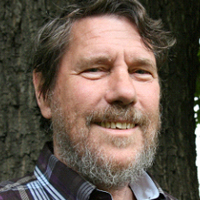
Professor Dick Bedeaux
(Norwegian University of Science and Technology, Trondheim, Norway)
Dick Bedeaux received both MSc (1964, cum laude) and PhD (1969) in Theoretical Physics from the Utrecht University, The Netherlands. He has held postdoctoral and visiting positions at University of California at San Diego, La Jolla (USA) and Wolfgang Goethe Universität, Frankfurt (Germany). He has been a Professor of Theoretical Physics at the Institute for Theoretical Physics, Trondhem, Norway (1981-1983) and a Professor of Physical Chemistry at University of Leiden, The Netherlands (1984 – 2006). He was also a Guest Professor at the Department of Mathematics, University of Strathclyde, Glasgow between 1997 2005. He is now a Professor of Physical Chemistry at Norwegian University of Science and Technology, Trondheim, Norway. A world authority on non-equilibrium thermodynamics, Professor Bedeaux was elected as Foreign Member of the Norwegian Academy of Technical Sciences, Fellow of the American Physical Society and a Member of the Royal Norwegian Academy of Sciences and Letters.
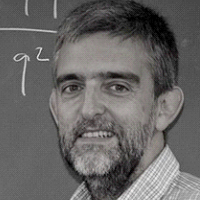
Professor Ignacio Pagonabarraga
(University of Barcelona)
Ignacio Pagonabarraga is Professor in Condensed Matter Physics in the Department of Fundamental Physics at the University of Barcelona. He graduated in Physics from Universitat de Barcelona in 1989 where he also obtained a PhD (cum laude) in Physics in 1995. He has performed postdoctoral stays at Institute Amolf in Amsterdam, in the group of Prof. D. Frenkel and at the University of Edinburgh in the group of Prof. M.E. Cates. He has published over 140 papers in international journals. He has been invited to over 80 International conferences. He has also been appointed visiting or invited Professor at the Université Paris-Sud, Université Claude Bernard Lyon 1, Technical University of Berlin, Indian Institute of Technology in Chennai, the Kavli Institute for Theoretical Physics in Santa Barbara, USA. Ignacio has been the coordinator of the master program in computational physics at the University of Barcelona (UB), as well as a committee member for three master programs at UB in Computational Physics, Biophysics and Computational Science, as well a coordinator of the PhD program in Physics at UB.
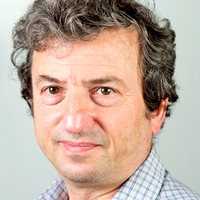
Professor Lev Kantrorovich
(King’s College London)
Lev received a BSc (1979) in Theoretical Physics from the Department of Physics & Mathematics, Latvian University, Riga, Latvia, USSR, and PhD (1985) in Solid State Physics from Institute of Physics, The Latvian Academy of Sciences, Latvia, USSR. He held various post in Latvia before moving to the University of Keele, UK in 1994. In 1996 he joined the University College London. Lev is world-leading expert of theory and simulation of condensed matter and is currently a Professor at King’s College London, which he joined in 2002. Lev is author of nearly 200 papers in refereed international journals and two books.
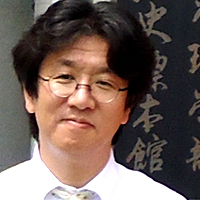
Professor Toshihiro Kawakatsu
(Tohoku University, Sendai, Japan)
Professor Kawakatsu received degree of Doctor of Engineering from Kyoto University in 1989. Then he worked as a Research Associate at the Department of Physics of Kyushu University. In 1994 he became an Associate Professor at the Department of Physics of Tokyo Metropolitan University, before becoming an Associate Professor at the Department of Computational Science and Engineering of Nagoya University in 1998. Since 2001 he is a Full Professor at Department of Physics, Tohoku University, Sendai. He also works on robotics. He is a member of many national committees, including: Japan Association for Chemical Innovation (Supervisor for the Polymer Simulation Working Group), Organizing committee of the joint research application for the super-computer centre of Institute of Solid State Physics (ISSP), University of Tokyo, Organizing committee of Computational Material Science Initiative program of supercomputer "Kei", member of the national OCTA Users Group, as well as Organizing committee of the International Graduate Program for Advanced Science of the graduate school of Science, Tohoku University and member of the Evaluation-Analysis Office of University Activity, Faculty of Science, Tohoku University.
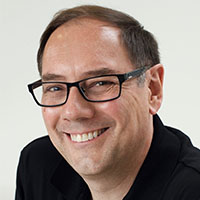
Professor James Kakalios
(University of Minnesota, USA)
James Kakalios is the Taylor Distinguished Professor in the University of Minnesota’s School of Physics and Astronomy. He received his Ph.D. in Physics from the University of Chicago in 1985, and from 1988 is at the University of Minnesota. His popular science book The Physics of Superheroes was published in 2005 in the U.S. and the U.K., and has been translated into German, Spanish, Korean, Chinese and Italian. The Spectacular Second Edition was published in 2009, and his second book The Amazing Story of Quantum Mechanics was released in. His next book, The Physics of Everyday Things: The extraordinary Science of an Ordinary Day was published 2017. In 2007, in response to a request from the National Academy of Sciences, he served as the science consultant for the Warner Bros. superhero film Watchmen. His research interests include nanocrystalline and amorphous semiconductors, pattern formation in sandpiles and fluctuation phenomena in neurological systems. He was the Chair of the American Physical Society (A.P.S.) Committee on Informing the Public, Past-Chair of the A.P.S. Forum on Outreach and Engaging the Public, winner of the 2014 American Association for the Advancement of Science (AAAS) Public Engagement with Science Award, and the 2016 Andrew Gemant Award for outreach efforts from the American Institute of Physics. In 2017 he was awarded an Honorary Doctor of Science degree from the University of Lincoln.
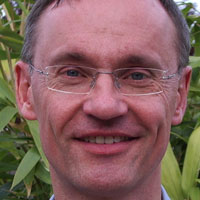
Dr Gerhard Goldbeck
(Goldbeck Consulting Ltd, Cambridge, UK)
Gerhard received his Diploma in Physics from RWTH Aachen University, Germany, in 1986 and a PhD in Polymer Physics from Bristol University in 1992. His career so far has encompassed academic research at Forschungszentrum Jülich, Germany, (Dendritic Growth), H.H. Wills Physics Laboratory (Polymer Crystallisation) and Cambridge University Department of Materials Science and Metallurgy (Liquid Crystal Polymers). In addition, software development, product management and marketing in industry (Molecular Simulations, Accelrys). In 2011 he formed Goldbeck Consulting Ltd, a company that aims to bridge gaps in the materials modelling value chain from science to engineering and academia to industry. Gerhard has published more than 60 papers and articles on scientific literature, and authored reports on the industrial impact of modelling, as well as on academia-industry collaborations. He assists the European Commission in running and monitoring Research Projects as well as the European Materials Modelling Council.
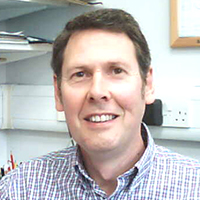
Dr Martin Cawley
(United Lincolnshire Hospitals NHS Trust, Lincoln, UK)
Martin contributed to the research in NMR Imaging under Sir Peter Mansfield in Nottingham gaining his doctorate in 1987. The scanner he used is now on display in the Science Museum, London. Continuing his work with medical images he switched to computer science and applied artificial intelligence methods to model anatomy until 1990. Returning to physics he took up a post in radiotherapy and is now head of Radiotherapy Physics in Lincoln after working at the Queen Elizabeth Hospital Birmingham and the National Cancer Institute in Dublin. In 2019 he took on the additional role of Lead Healthcare Scientist for the United Lincolnshire Hospitals.
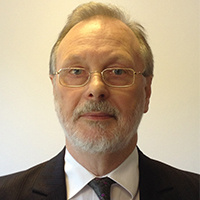
Neil Main
(Micrometric Ltd)
Neil Main joined Micrometric Ltd in 1982 and is now Managing Director. Micrometric is one of the leading laser job shops in the UK and have a mix of high power lasers providing cutting, welding, drilling and marking to automotive, aerospace, medical and power generation. Neil Main has a background in physics and came to lasers by way of semiconductors. He is a governor of Lincoln University College (Lincoln UTC) a secondary school specialising in Science and technology. He has been a governor of Lincoln College and had represented the UK laser industry as President of the Association of Industrial Laser Users (AILU).

Gary Stimson
(e2v technologies Ltd)
Gary joined e2v (formerly EEV) in 1983. He has held a variety of technical roles in electronic safety and initiation, laser protection devices, microwave protection devices, high power microwave transmitters and high-voltage pulsed power.
He has been e2v's Design Authority (DA) for the development of a number of High Power Microwave (HPM) transmitter sources, including some of the highest powered systems in the UK. Gary is currently working on e2v's "RF Safe-StopTM" vehicle deactivation technology which uses an HPM source to induce spurious signals into vehicle electrical systems, effectively jamming the engine's Electronic Control Unit to bring the vehicle to a safe stop.
Gary also uses his microwave expertise to lead a complimentary research and development activity at e2v's Microwave Technology Centre in Lincoln, which is exploring the responses of radio and radar receivers to unusually fast, high power, and out-of-band signals in order to inform the development of cutting edge receiver protection components.
Now a Product Manager, Gary also has responsibilities for technology strategy development, and business development, but remains actively involved in engineering development activities and is still regularly found in the laboratory.

